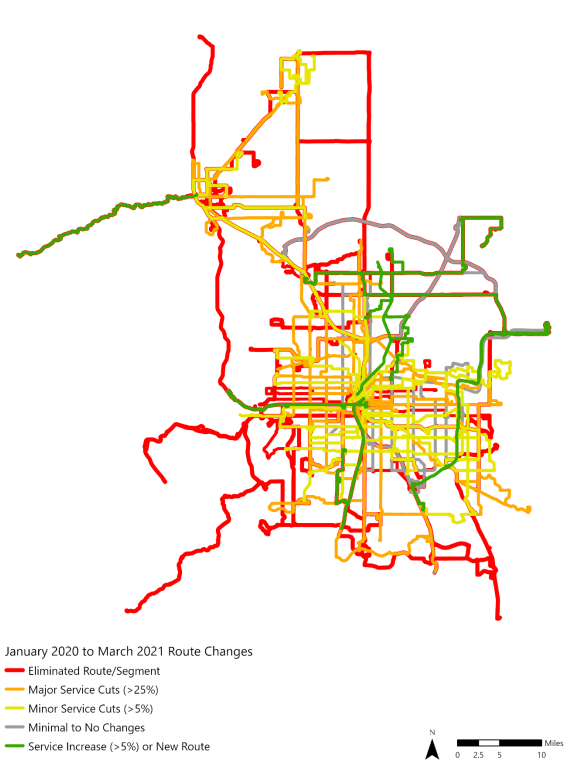When the pandemic hit Colorado last year and the Regional Transportation District slashed bus and train service across the Denver metro, it tried to lessen the impact on passengers who need public transit the most.
And, a new report from RTD says, it largely succeeded. The agency made major cuts and changes to more than 100 routes. Of those, routes that serve low-income areas and routes that primarily serve people of color -- so called "equity groups" in RTD's parlance -- saw fewer cuts than routes that serve wealthier, and whiter, riders.
"When considering all routes in the RTD network, and compared to the average 31% reduction in service, low-income routes had a 13% smaller reduction compared to higher-income routes," RTD staff wrote in a report to the board of directors last week. "Minority routes had a 29% smaller reduction than non-minority routes."
The agency even bumped up service last fall along relatively dense corridors like West Colfax and Federal Boulevard that have higher transit-reliant populations. But that change came at the expense of downtown commuter buses.
Staff prepared the report as required by Title VI of the 1964 Civil Rights Act. That will also guide how the agency restores more service in the coming months and years.
"Title VI and transit equity will be top of mind as we add service [back]," Carl Green, RTD's new transit equity manager, told the board recently.
RTD should also pay attention to where it has cut service the deepest, said Peggy Catlin, who represents much of Jefferson County on the RTD board
"There's an incredible amount of red in the southwest and southeast areas of the metro," she said referring to this map:

Those areas also have communities of color and low-income residents in need, she said, adding that constituents have told her of a growing number of seniors in the Conifer and Evergreen areas who need additional mobility services.














